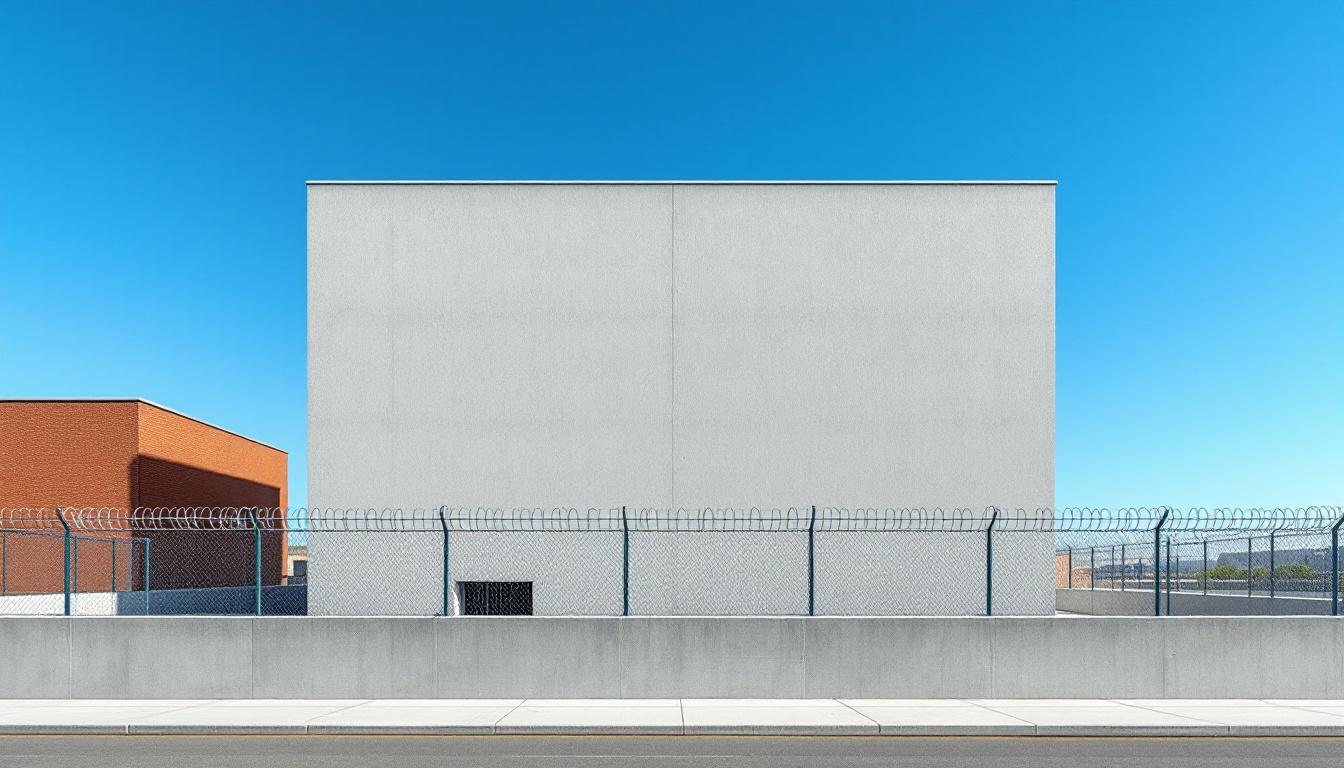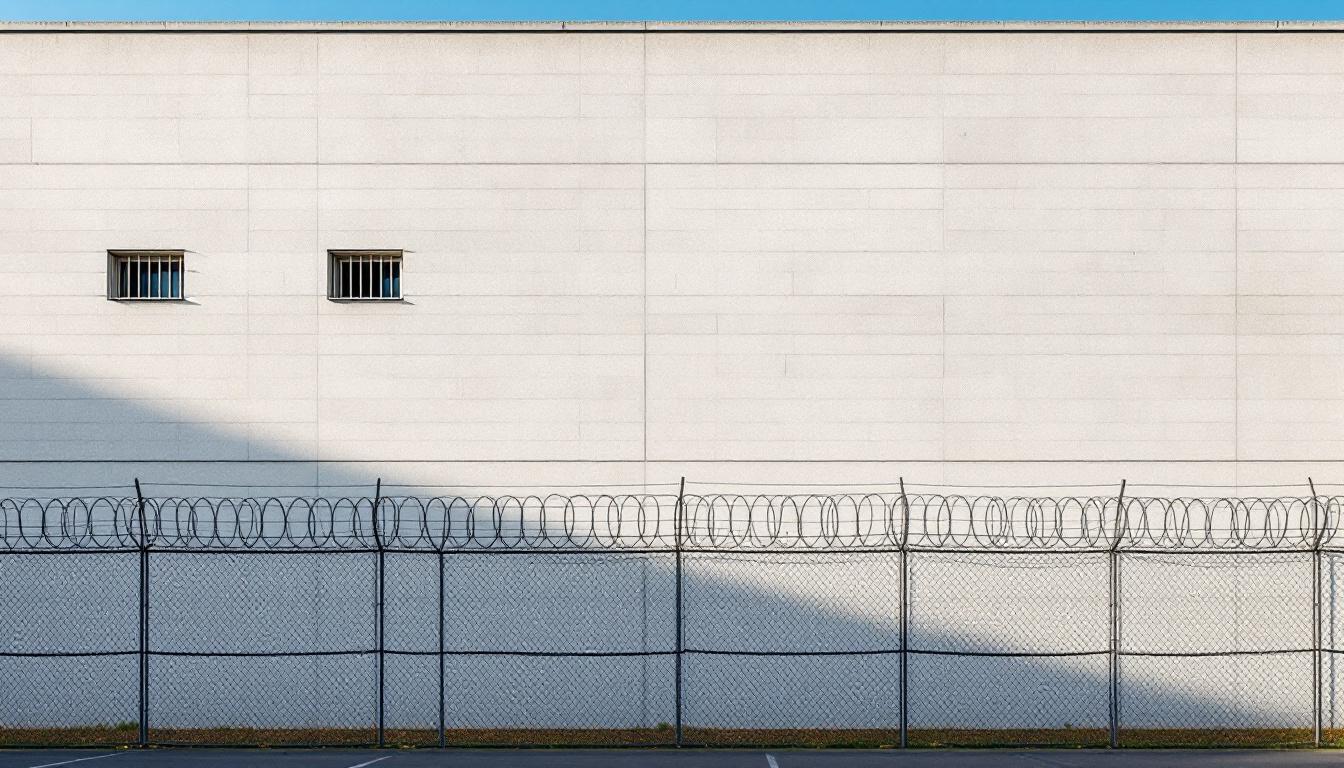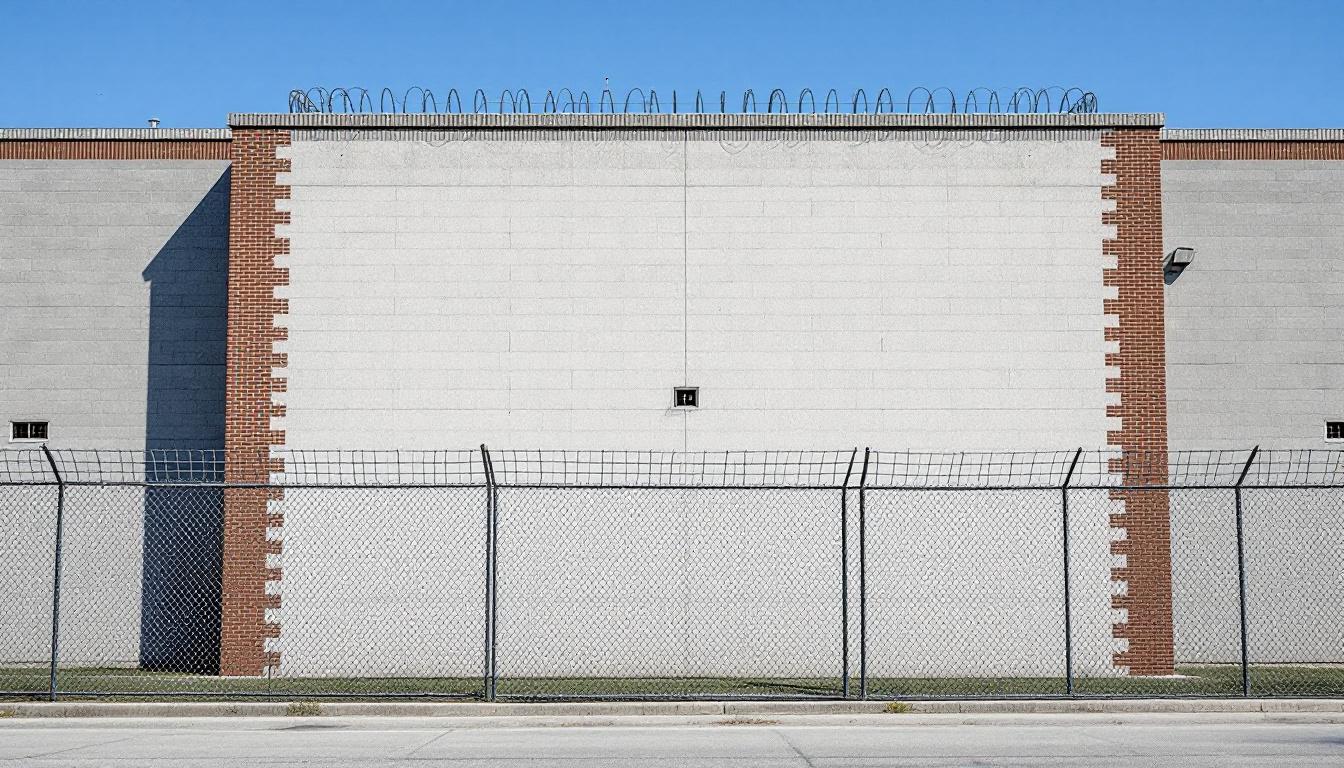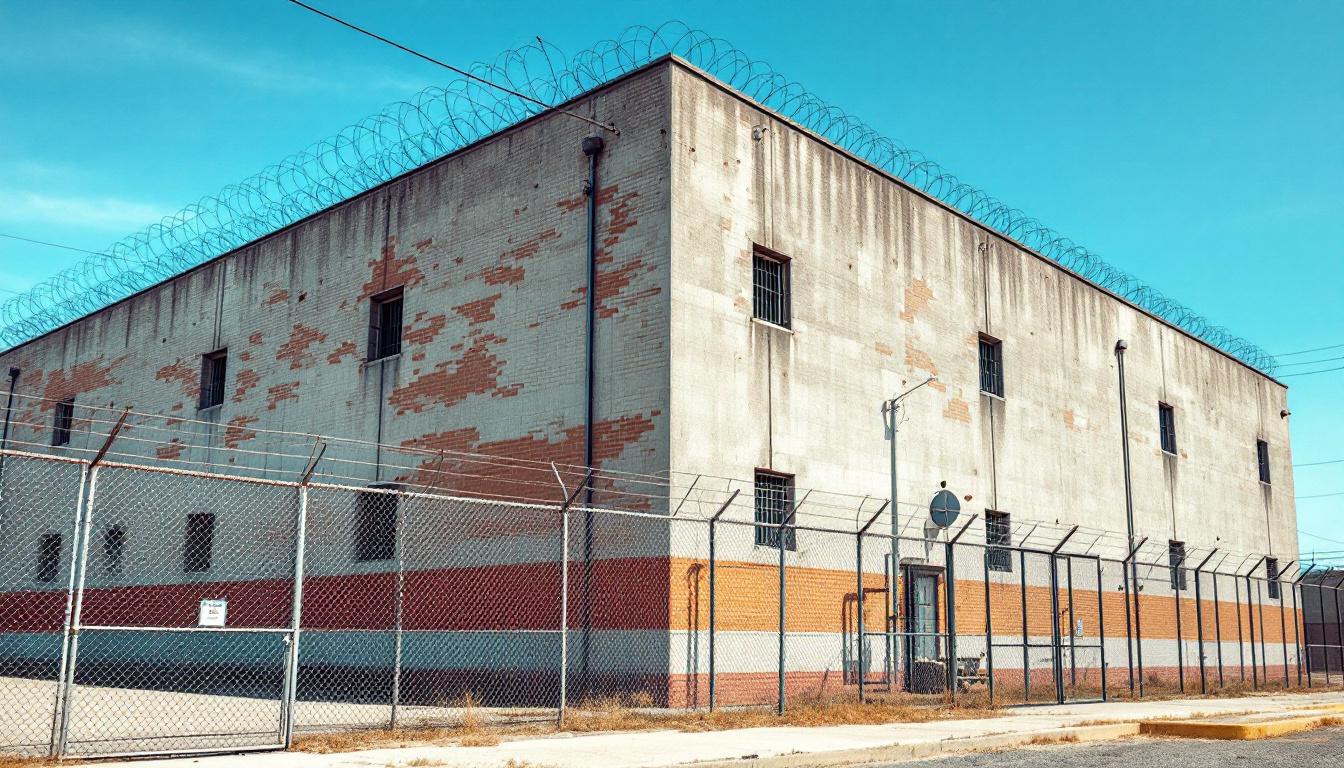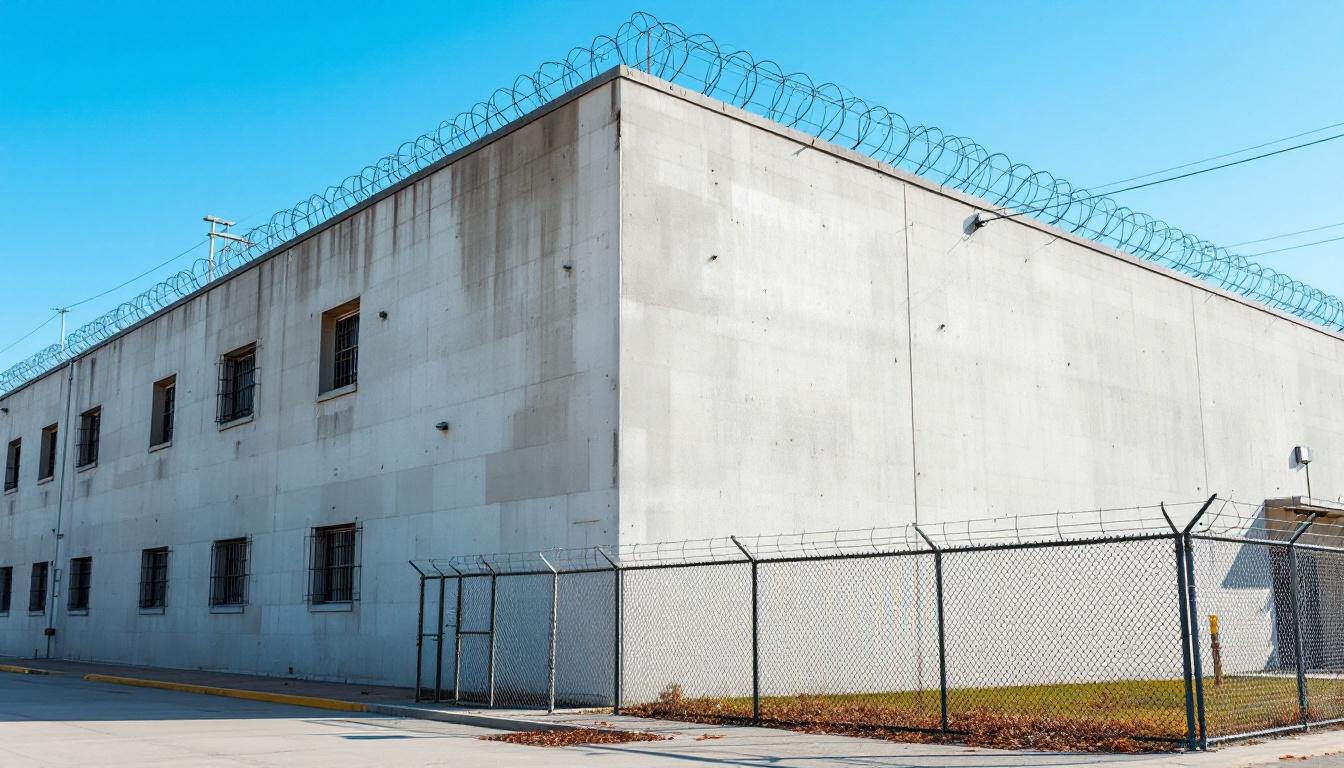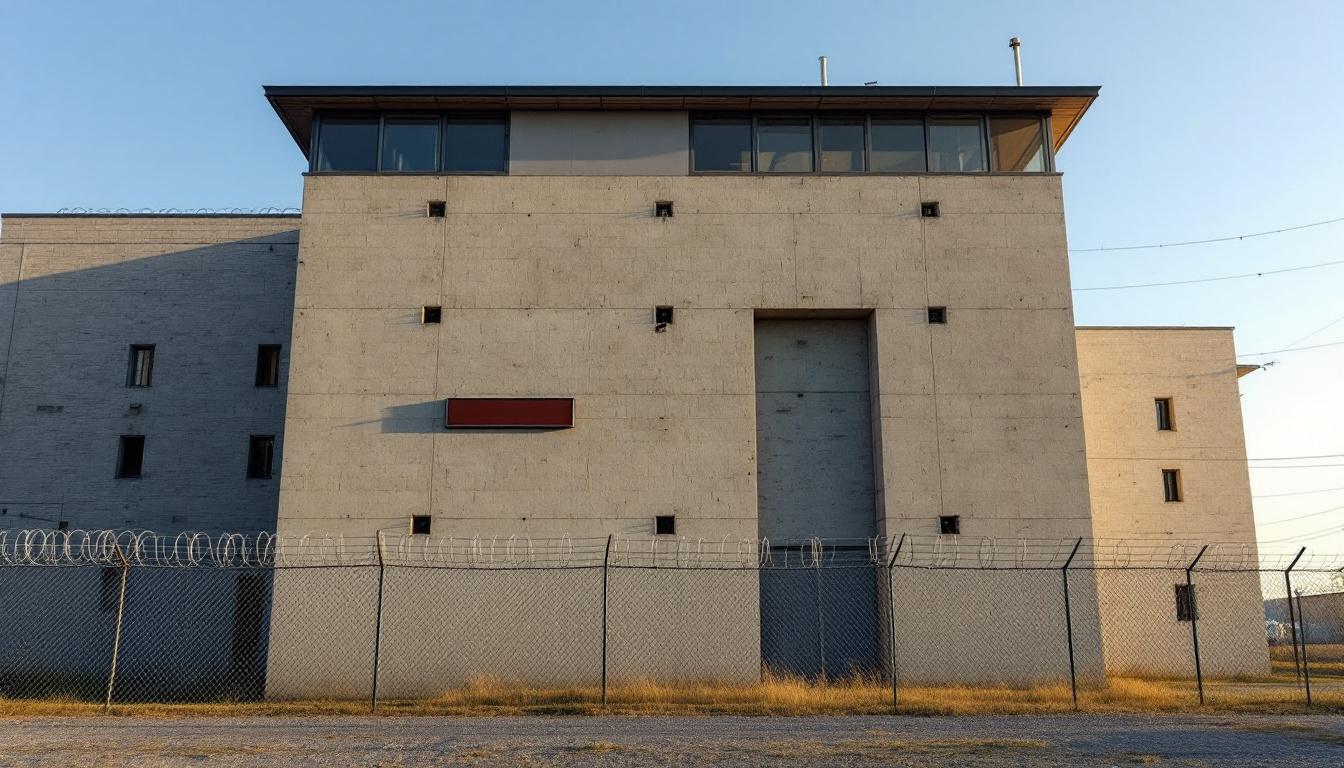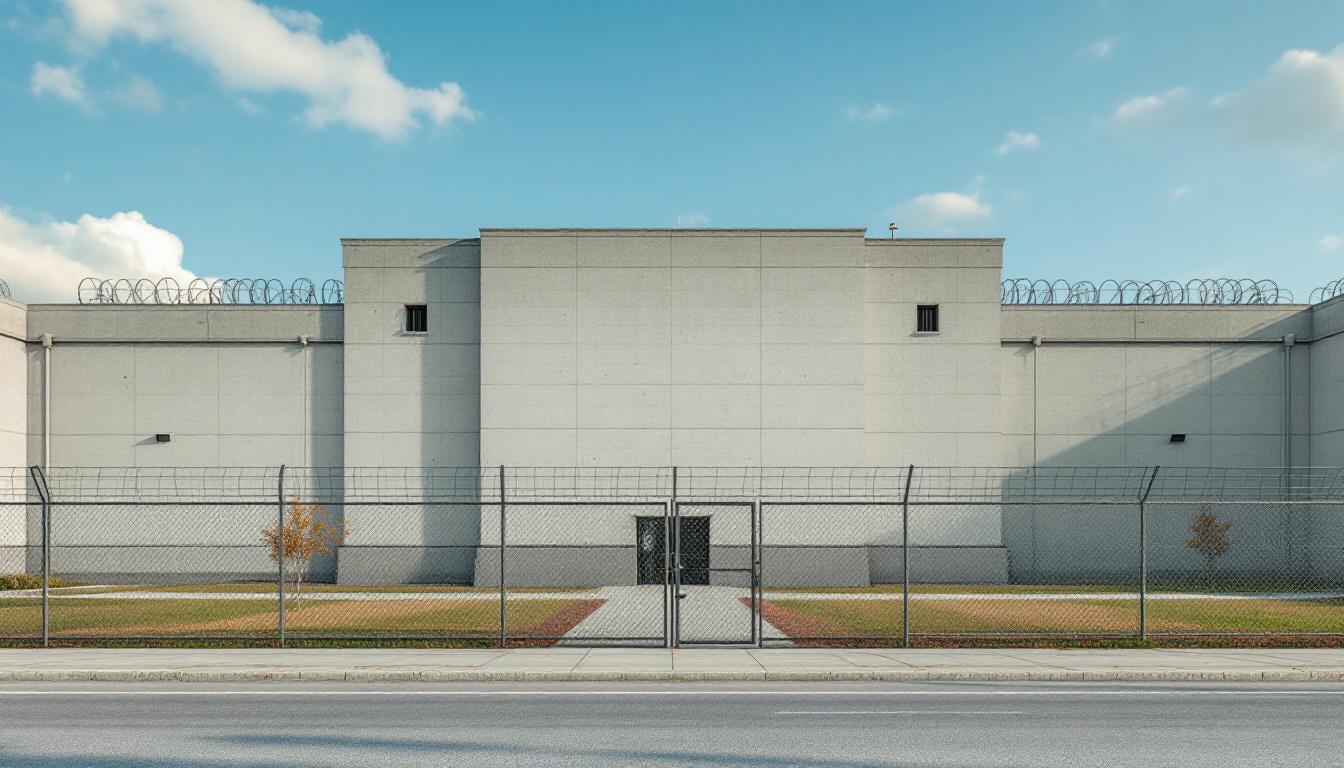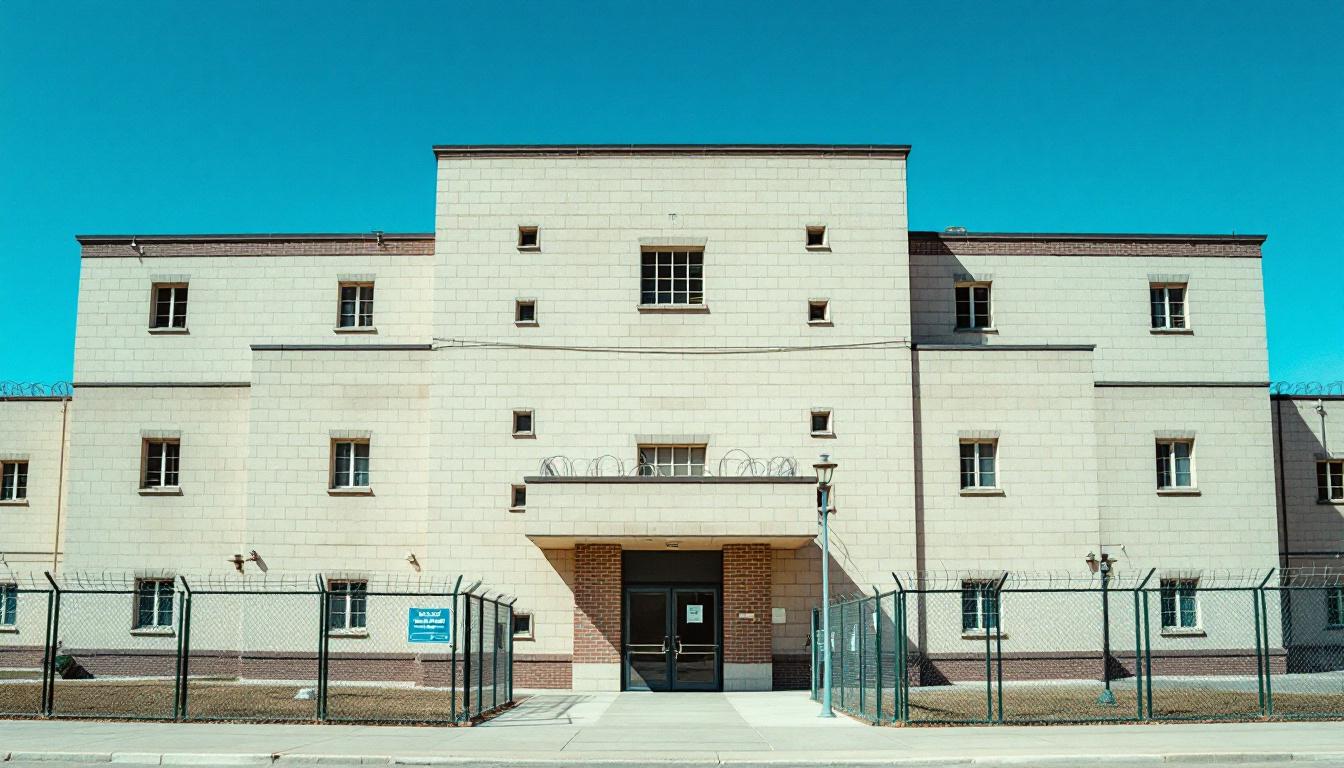
Quick Navigation
How to contact an inmate at Salt Lake County Metro Jail
This comprehensive guide will walk you through how to connect with an inmate at Salt Lake County Metro Jail. Follow the steps below to find an inmate and send letters and photos:
- Search for the inmate using our search tool below
- Create your account or log in to Penmate
- Write your message (up to 6,000 characters)
- Send instantly - inmates receive printed copies daily
Find an Inmate
Search for an inmate to start communicating today
Tip: You can search by first name, last name, or inmate ID number
To contact a person at Salt Lake County Metro Jail start by searching for the person on the official facility website. Perform a search by following these steps:
- Step 1: Enter their first name and last name into the search form and click "Search"
- Step 2: Locate their inmate record
- Step 3: Write down their Inmate ID and any housing information provided
Important! Be sure to enter the person's full name. Nicknames should not be used.
How to Send Messages to Inmates

You can use your phone or computer to send emails, letters, and photos to an inmate. Messages are sent electronically to inmate tablets or kiosks at the facility. If you would like to send a message, start by searching for an inmate at Salt Lake County Metro Jail.
Sending Photos and Postcards

A great way to send love and support to a loved one at Salt Lake County Metro Jail is to send photos and postcards. It only takes a few minutes to send photos from your phone and it makes a huge difference. You can also mail postcards with words of support and inspiration, or design your own postcard for special moments like birthdays and holidays.
Important! Be sure not to send any explicit photos or they may not be approved by the facility. You can also use a photo printing app like Penmate to make sure your photos are printed at the correct size (4x6 or 3x5) and are mailed according to the rules and regulations of Salt Lake County Metro Jail.
Frequently asked questions about Salt Lake County Metro Jail
-
How long does it take to deliver a message?
If you're sending an email message your letter is usually delivered within 24-48 hours. For messages sent via mail you should expect delivery within 3-7 days. All messages will need be approved by Salt Lake County Metro Jail.
-
How much does it cost to send a message to Salt Lake County Metro Jail?
You can send a message free using your phone or mail a message via USPS for the price of a $0.60 stamp and envelope. You can also purchase credits or e-stamps from services starting at $1.99.
-
What services can I use to contact an inmate at Salt Lake County Metro Jail?
Penmate
You can use Penmate to send letters and photos to an inmate from your phone. It's an easy way to stay in touch during your loved one's incarceration. Use the inmate locator to find an inmate's location and contact information, then you can send messages within a few minutes.
Securus messaging
Securus may be another option for communicating with an inmate at Salt Lake County Metro Jail. You can create a friends and family account and purchase credits to send messages. All messages will be reviewed and must be approved by the facility.
JPay
Some county jails and state prisons may support sending messages with JPay. You must register an account with the system, find your loved one, and purchase stamps to send messages. For some locations you can also attach photos.
Smart Jail Mail
You may also check if Smart Jail Mail is available at Salt Lake County Metro Jail. Smart Jail Mail is operated by Smart Communications and has contracted with some state and county jails. After purchasing credits, your messages and photos are sent to the facility, printed out, and then handed out to your loved one.
-
What is the mailing address of Salt Lake County Metro Jail?
Mailing address:
Salt Lake County Metro Jail
3415 S 900 W
South Salt Lake, UT 84119
Phone: (385) 468-8400Business hours:
- Monday: Open 24 hours
- Tuesday: Open 24 hours
- Wednesday: Open 24 hours
- Thursday: Open 24 hours
- Friday: Open 24 hours
- Saturday: Open 24 hours
- Sunday: Open 24 hours
-
What are the visiting hours at Salt Lake County Metro Jail?
Visiting hours at Salt Lake County Metro Jail vary by housing unit and security level. Generally, visits are scheduled on weekends and holidays, with some facilities offering weekday visits. Contact the facility directly at (385) 468-8400 or check their website for the current visiting schedule. Visits typically last 30-60 minutes and must be scheduled in advance.
-
What items are prohibited when sending mail to Salt Lake County Metro Jail?
Prohibited items typically include: cash, personal checks, stamps, stickers, glitter, glue, tape, staples, paperclips, polaroid photos, musical or blank greeting cards, hardcover books, magazines with staples, and any items containing metal or electronics. Only send letters on plain white paper with blue or black ink. Photos must be printed on regular photo paper (no Polaroids). Always check with Salt Lake County Metro Jail for their specific mail policies.
-
How do I send money to an inmate at Salt Lake County Metro Jail?
You can send money to an inmate at Salt Lake County Metro Jail through several methods: 1) Online using JPay, Access Corrections, or the facility's approved vendor, 2) Money orders mailed directly to the facility with the inmate's name and ID number, 3) Kiosks located in the facility lobby, or 4) Over the phone using a credit or debit card. Fees vary by method, typically ranging from $2.95 to $11.95 per transaction.
-
Can I schedule a video visit with an inmate at Salt Lake County Metro Jail?
Many facilities now offer video visitation as an alternative to in-person visits. At Salt Lake County Metro Jail, video visits may be available through services like Penmate, Securus Video Connect, GTL, or ICSolutions. Video visits typically cost $10-20 for 20-30 minutes and must be scheduled in advance. You'll need a computer or smartphone with a camera and reliable internet connection. Contact the facility for their specific video visitation policies and approved vendors.
-
What identification do I need to visit an inmate at Salt Lake County Metro Jail?
All visitors must present valid government-issued photo identification such as a driver's license, state ID, passport, or military ID. Minors must be accompanied by a parent or legal guardian who can provide the minor's birth certificate. Some facilities require visitors to be on the inmate's approved visitation list, which may require a background check. Contact Salt Lake County Metro Jail for specific ID requirements and visitor approval procedures.
-
How can I find out an inmate's release date?
To find an inmate's release date at Salt Lake County Metro Jail, you can: 1) Use the online inmate search tool if available, 2) Call the facility's records department, 3) Contact the inmate's case manager or counselor, or 4) Have the inmate provide this information during a call or visit. For privacy reasons, some facilities only release this information to immediate family members.
Facility Overview
Contact Information
Salt Lake County Metro Jail3415 S 900 W
South Salt Lake, UT 84119
Phone: (385) 468-8400
Official Website
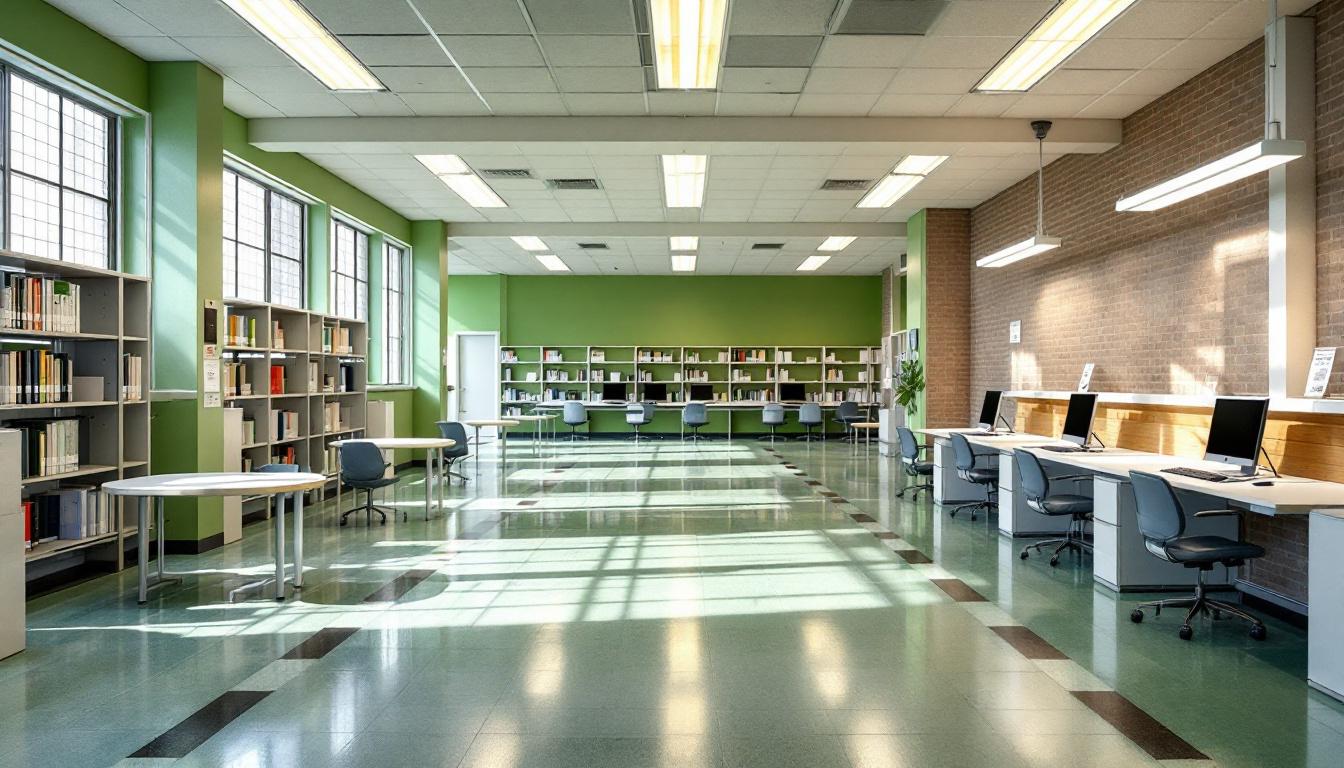
About Salt Lake County Metro Jail
Community safety and rehabilitation intersect daily within Salt Lake County Jail, UT, where the facility's operations center on connecting individuals with resources that extend well beyond the detention period. Located in Salt Lake City, this county jail typically functions as both a pre-trial holding facility and a short-term correctional institution, processing individuals through various stages of the judicial system while maintaining connections to community-based support networks. The facility generally works to establish pathways between incarcerated individuals and local service providers, recognizing that successful reintegration often depends on coordinated efforts between correctional staff and community organizations throughout the Salt Lake Valley region.
The jail's approach to inmate services typically emphasizes preparing individuals for their return to the community through programming that may include educational opportunities, substance abuse counseling, and mental health support. Staff members often coordinate with local agencies to ensure continuity of care, particularly for individuals dealing with addiction or mental health challenges common in urban correctional populations. Given Salt Lake City's position within Utah's correctional system, the facility generally serves as a crucial link between arrest and either release or transfer to state-level institutions, making community integration planning an essential component of daily operations.
Within the broader context of Utah's mountain region correctional network, Salt Lake County Jail, UT often collaborates with various community stakeholders to address the underlying factors that contribute to criminal behavior. This process-oriented approach may involve connecting inmates with employment resources, housing assistance, and ongoing treatment programs that continue after release. The facility's role in the state's correctional system typically extends beyond simple detention, encompassing preparation for successful community reentry through partnerships with local organizations that understand the unique challenges facing individuals transitioning back into Salt Lake City's diverse urban environment.
Programs & Services
Personal transformation becomes achievable when correctional environments prioritize comprehensive rehabilitation through structured developmental opportunities. The Salt Lake County Jail typically emphasizes a holistic approach to inmate growth, recognizing that meaningful change occurs through multifaceted support systems that address educational deficits, vocational skill gaps, and underlying behavioral patterns. This philosophy often guides the facility's service delivery, creating pathways for inmates to build foundational competencies while addressing personal challenges that may have contributed to their incarceration.
Educational advancement serves as a cornerstone of the facility's developmental framework, with services that may provide inmates opportunities to complete their high school diploma programs through structured coursework and individualized academic support. These education programs often accommodate varying literacy levels and learning styles, enabling participants to progress at appropriate paces while building essential academic skills. Furthermore, vocational training services typically complement educational offerings by introducing inmates to practical skill sets that enhance employment prospects upon release, potentially including instruction in trades or technical competencies that align with regional workforce demands.
Therapeutic communities within the facility often create supportive environments where inmates can engage in structured peer interactions while working toward behavioral modification and personal insight. Individual counseling services may provide personalized attention to address specific psychological needs, trauma histories, or substance abuse issues that require professional intervention. Additionally, creative expression through arts and crafts activities typically offers inmates alternative outlets for emotional processing and skill development, contributing to overall psychological well-being while fostering constructive use of time during incarceration.
Daily Life & Visitation
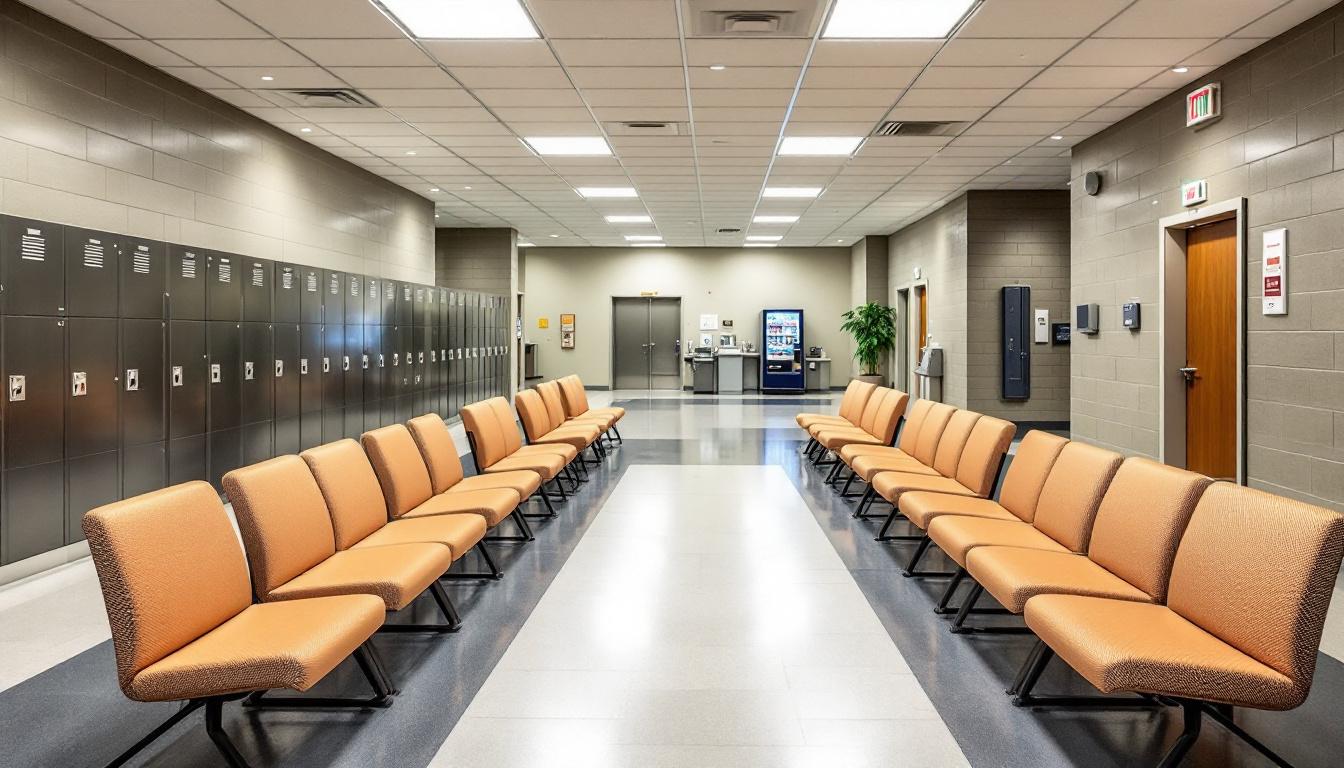
The concrete walls and fluorescent lighting of the housing units create a controlled environment where inmates at Salt Lake County Jail must quickly learn to navigate the structured rhythms of institutional life. Today's routine typically begins with early morning headcounts, followed by meal service that consistently anchors the day's schedule, while inmates adapt to the regimented nature of correctional living through established patterns of movement and activity.
Living accommodations generally consist of shared cells or dormitory-style housing units, where inmates learn to respect personal space within the confines of limited square footage and basic furnishings that typically include metal bunks, a small desk area, and essential hygiene facilities. Furthermore, the dining arrangements involve scheduled meal times in designated areas, where inmates receive nutritionally planned meals while following specific protocols for movement and seating. Personal property remains restricted to approved items, and commissary privileges may provide access to additional food items, hygiene products, and writing materials that help inmates maintain connections to their outside lives.
Although the institutional environment presents obvious challenges, various programs and activities provide structure and purposeful engagement throughout the week. Work assignments within the facility often include kitchen duties, cleaning responsibilities, and maintenance tasks that give inmates opportunities to contribute to daily operations while developing routine. Recreation time typically offers access to television areas, reading materials, and limited physical exercise opportunities, while visitation policies generally allow scheduled visits with family members and approved contacts. Communication with loved ones usually occurs through monitored phone calls and written correspondence, helping inmates maintain vital support systems that prove essential for successful adaptation to the correctional environment.
Ready to Connect?
Start communicating with your loved one today
Search for an Inmate
